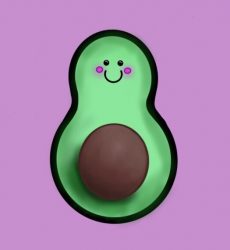AIMS
This unit aims:
• To broaden your perspective by positioning Animation within contemporary cultures
• To encourage you to make connections to wider issues and contexts
• To break down assumptions and perceptions of the limitations of animation (it is limitless!)
• To provide you with an introduction to the theoretical tools and methodologies that will open up your frames
of reference
• To support you in the development of research methods and written and oral communication skills
• To individually and collaboratively explore notions of authorship, developing your creative ‘voice’ and your
way of seeing
• To look at ways in which creative writing can play a role in your creative work
PROJECT
Project brief
Animation is not only digital. It is anything and everything that moves or suggests movement. We want this to be at
the heart of your thinking as you begin your course. This project should stand as a jumping off point for your future
creative journey.
This is about you, about the particularity of your own life and living, because the first part of any creative endeavor
is look at yourself and ask, who am I? what do I care about? what is important to me and, why?
The work you make has to begin with you, should aim to be a considered response to what you see, hear,
experience, to the unique and singular questions that you will ask of the world.
To do that effectively, we need to learn to unlearn, to develop a ‘what if’?’ approach to making work where nothing
is off the table and everything is explored, questioned and debated. This means deconstructing, abstracting,
unpacking what we see and reframing it, making it mean something new.
CONTENT
This is a project that will form the beginning, we hope, of a conversation between you and the rest of the world. It is
a place to begin thinking about your practice as an animator, as a maker, as a communicator. It is about applying
that practice, developing your voice as a storyteller, and further refining your way of seeing and speaking.
Your work should always stand as a response to something.
You are to create a short film (THIRTY SECONDS duration) that deals with, and speaks to, an issue you feel
strongly about.
Imagine a syringe being forced down your throat to inject a chemical into your stomach, or being restrained and forced to breathe sickening vapours for hours. That’s the cruel reality of animal testing for millions of mice, rabbits, dogs and other animals worldwide.
Animals are forced to smoke, cosmetic products being dripped into their eyes all in order to prove elegibility for the harmlessness of our beauty products. Millions of animals are dying in laboratories.
Animals are not humans, inspite of the close relationshop we have with them, we are different, which means we will have different reactions with things (different metabolisms)
Thalidomide causing malformations in humans, but not for usual experimental animals
Painkillers are okay for people, but poison to cats
Arsenic is poison to humans, but does no harm to sheep
Varnishes, dyes, bitumen, industrial fuels are pumped into the stomach of rats for months
Animal testing facts:
- Government regulations often require numerous different animal-poisoning tests to assess the hazards of a single new chemical, pesticide or medicinal product.
- Some tests use thousands of animals at a time, while others are repeated two or even three times using different animal species or routes of administration (oral force-feeding, forced inhalation or skin); no pain relief is provided.
- There’s no “humane” way to poison animals with chemicals or to infect them with deadly diseases like rabies to test the effectiveness of a vaccine; however, there are modern non-animal alternatives that work just as well—or better.
- HSI works through intergovernmental bodies such as the OECD to accelerate global adoption of modern non-animal testing methods, and through our network of country offices to have these new approaches taken up through national regulations.
- Our efforts have been instrumental in securing “mandatory alternatives” requirements in Brazil and South Korea, whereby it is illegal for a company to conduct animal experimentation if a non-animal approach is available. We’re also helping pass bans on cosmetic animal testing around the world through our #BeCrueltyFree campaign.
- HSI is also supporting training in developing countries to help companies and government authorities transition to modern non-animal methods.
SUMATTIVE ASSESMENT


